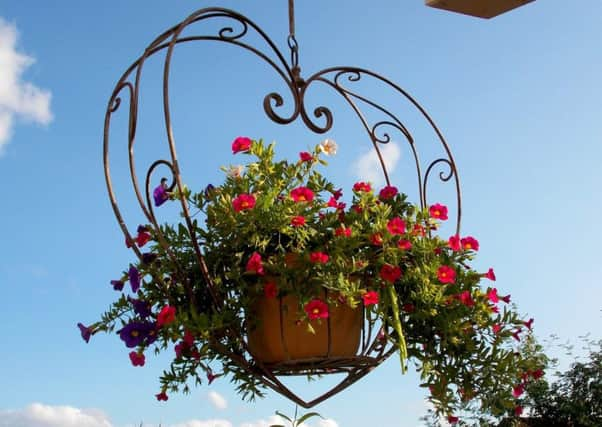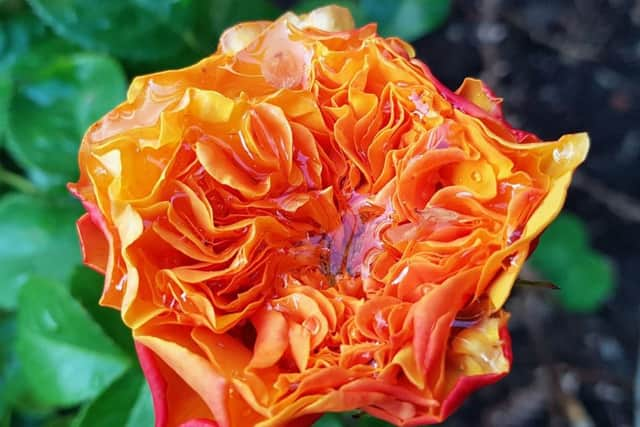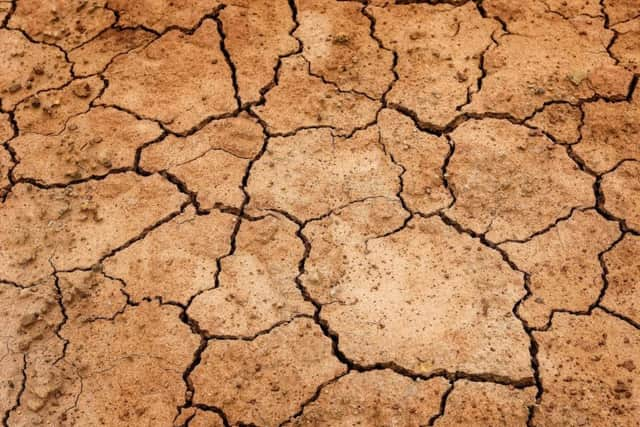Gardening: Tips to save your plants using the minimum water during hot weather


So, exactly how do you save your plants using the minimum amount of water?
If this dry, hot weather continues, here are some tips to keep your garden going:


Advertisement
Hide AdAdvertisement
Hide Ad1. Watering in the late evening is best, if not, then early morning – never in the full heat of the day.
2. Don’t give little and often – this encourages shallow rooting and drying out.
It’s better to give established plants a thorough soaking once or twice a week so deep roots are reached.
3. Concentrate on pots. They will need watering every day.


Add water-retentive gel when potting on.
If the severe temperatures continue, move what you can into the shade and conservatory and greenhouse plants outdoors.
Advertisement
Hide AdAdvertisement
Hide Ad4. Give up on hanging baskets. They will have to be watered twice a day, which is why I don’t use them.
5. Prioritise new plants. They will wilt and be damaged easily.
David Austin Roses recommends a watering can full a day in extreme temperatures for roses.
6. Open all vents and doors in greenhouses and glass structures.
Advertisement
Hide AdAdvertisement
Hide AdIt may be necessary to water tomatoes, etc, in grow bags and pots twice a day.
Damp down the floor with water – this will cool the air when it evaporates.
7. Use a hand mister to increase humidity around tomatoes and runner beans to aid flower set.
8. If water use is restricted, sacrifice the lawn.
It takes a lot of water to keep it green and grass is capable of surviving extreme heat and lack of water.
Advertisement
Hide AdAdvertisement
Hide Ad9. If your water butts run dry, then use grey water from the bath or shower.
10. A bit late now but adding lots of organic matter, such as well-rotted manure early in the season, will help preserve water.
Mulches will also conserve water – and you can consider a gravel garden.
11. Remove weeds regularly to prevent them from competing with your plants for water.
GET IN TOUCH
Advertisement
Hide AdAdvertisement
Hide Adl For more information, plus cook what you grow, recipes, environmental news and more, log on to the website at www.mandycanudigit.com – which is also now smartphone friendly.
You can also follow Mandy on Twitter @MandyCanUDigIt or you can like me on my Facebook page at Mandycanudigit
jobs to do this weekend
Some seeds are best planted just after collection, and others may need specific climatic conditions to break dormancy (e.g. some alpines). If unsure, then sow seeds in ‘batches’, i.e. one immediately after collecting, one in winter, and one in the following spring.
Deadhead flower borders regularly to prolong flowering. Disbud and dead-head dahlias if growing for large blooms. Leave roses that produce attractive hips.
Advertisement
Hide AdAdvertisement
Hide AdMulching borders can help retain moisture, and keep down the weeds – this will save a lot of work. A really thick layer of mulch (5-7.5cm/2-3in all over) works best.
Inspect lilies for the red lily beetle whose larvae can strip plants in days and vine weevils can also be a problem at this time of year.
Look for and treat black spot on roses and scab on Pyracantha.
Fast-growing hedges such as Leyland cypress should be clipped as necessary throughout the growing season, but avoid birds’ nests.
Neat circular areas removed from the edges of rose and other leaves are telltale signs of leaf-cutter bees at work. These fascinating creatures are best tolerated as damage is rarely severe.